1. Bodie, California
Recognized as a National Historic Landmark, Bodie has been frozen in time since its last residents left a half century ago. Some homes are even stocked with goods. A former gold mining camp, Bodie dates back to the bad old days of the gold rush. In its heyday, Bodie was a bustling city with a population of 10,000 people. Dwindling mining profits eventually drove all its residents out. Bodie is now maintained by California State Parks, which has built a museum and offers daily tours of the ghost town.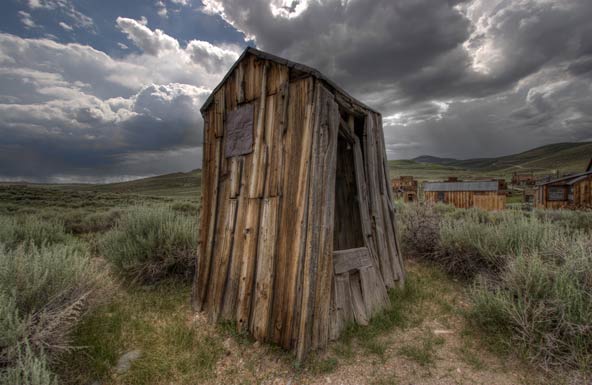
Travelers looking for a getaway from the normal getaway should skip the sandy beaches to walk amid silent relics in Namibia, Chernobyl or an abandoned California gold mining town. These empty places may look like Scooby Doo set pieces, but they hold important clues to bigger mysteries about both the past and the future.
2. Hashima Island, Japan
After spending a little less than a century as a bustling coal mining facility, Hashima Island became known as “Ghost Island” when demand for petroleum outstripped demand for coal in the 1960′s and the 5,000 Mitsubishi-employed islanders began a mass exodus. Now the workers’ housing, a massive cramped concrete apartment building built in 1916, sits empty. The last of the coal workers, many of whom were Chinese and Korean laborers forced to work in the undersea mines by the Japanese Government, left in 1974 was the facility was officially closed.Hashima Island was officially re-opened for tourists in April 2009. Ruins of the once densely populated city include schools and businesses.
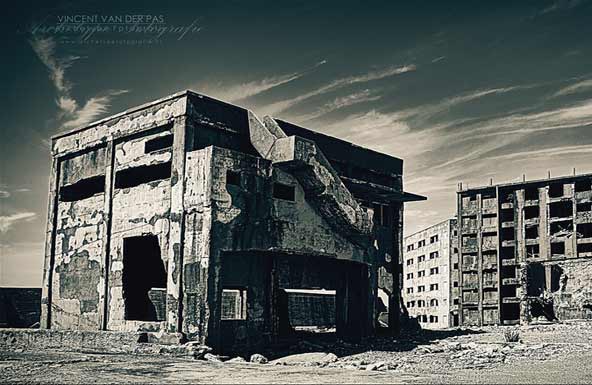
3. Centralia, Pennsylvania
Coal was responsible for the abandonment of another town halfway across the world. Centralia, Pennsylvania, was once a bustling industrial hamlet that relied on the vast deposits beneath it for income. In 1962, city workers accidentally ignited an exposed vein of coal while burning a pile of garbage. The coal carried the flames through the old underground tunnels and the earth has been burning here ever since. An engineering study has concluded that the fire could burn for another century. The town has attempted to put out the fire for years, but to no avail. The smoke and toxic fumes that rose up through the ground contaminated the entire town and government officials finally deemed it a lost cause.
In 1981, the federal government finally spent $42 million re-locating the residents of Centralia. The majority of the buildings in Centralia have either caught fire or been leveled.
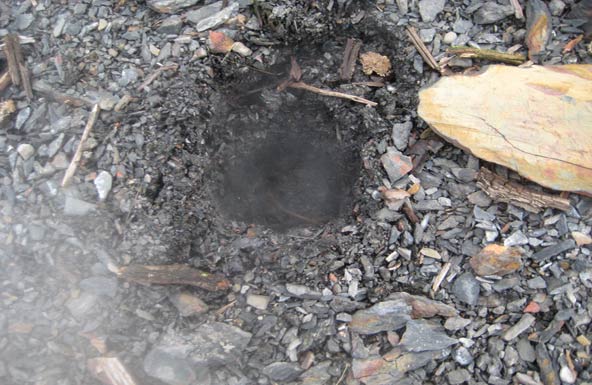
4. Maunsell Sea Forts, UK
These fortified English towers were operated by the Royal Navy and provided anti-aircraft fire against German air raids during World War II. Built in 1942, the sea forts were towed into the Thames Estuary and grounded in water no deeper than 100 feet. Each fort consisted of seven structures connected by catwalks.The forts were accessible by an entrance at the base of the platform. Although parts of these ladders are still visible today, they are in poor condition and attempting to access them could prove hazardous.
In 1955, it was decided that the forts were no longer necessary and they were decommissioned. The abandoned forts were used as pirate radio stations during the 60′s and 70′s, when unlicensed illegal broadcasting was rampant.
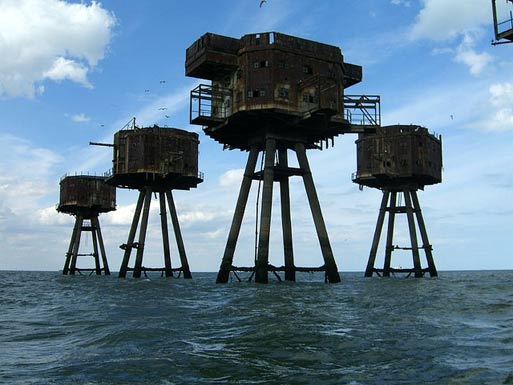
5. Beelitz-Heilstatten, Germany
This German ghost town has attracted curious tourists since its abandonment in 2000. Beelitz-Heilstatten is home to a sprawling hospital complex comprised of almost 60 buildings from the late 1800s and the spot where Adolf Hitler was treated for a leg wound during World War I. After the post-WWII division of Germany, the hospital was put under Soviet control and remained a Soviet military hospital until 1995, years after German reunification. The abandoned buildings have served as a destination for adventure travelers as well as filming crews. Beelitz-Heilstatten served as a set for The Pianist.
6. Oradour-sur-Glane
Oradour-sur-Glane is a French village that was declared a memorial to the cruelty of the Nazi occupation. The village was attacked and razed by a division of the Nazi German Army in 1944. Residents, including women and children, were brutally shot and burned alive. Roofless shells of buildings still sit empty. A museum here commemorates the attack.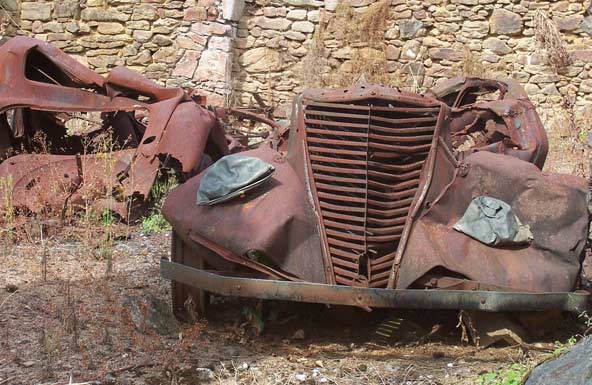
7. Humberstone, Chile
In 1872, Humberstone was established as a nitrate mining center in the harsh climate of the Atacama Desert. Humberstone processed the largest deposit of saltpeter (nitrate’s nickname) in the world and provided the valuable mineral to countries in North America and Europe for fertilizers, food preservatives and explosives. The creation of a cheap synthetic substitute in the 1930′s rendered the once robust mining operation obsolescent and the town slowly came to a standstill.Humberstone housed large factories as well as a swimming pool, marketplace, theatre and a hotel. This Chilean ghost town has been named a UNESCO World Heritage Site and has the feel of a Western movie set.
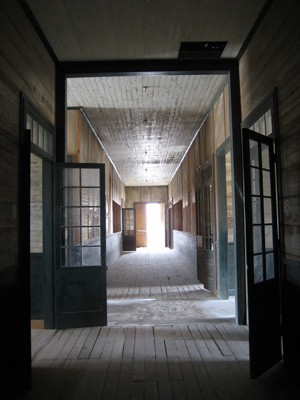
8. Kolmanskop, Namibia
After a single diamond was accidentally discovered here in 1908, this small African town became a magnet for German miners. Located in the Namib Desert in Namibia, the village was replete with European amenities and German architecture. Kolmanskop boasted southern Africa’s first x-ray machine and Africa’s first tram. By the 1920′s, the town became a bustling outpost of German culture. By 1954, the mines had been exhausted and the town was empty. Once stately homes are now filled to the windowsills with sand.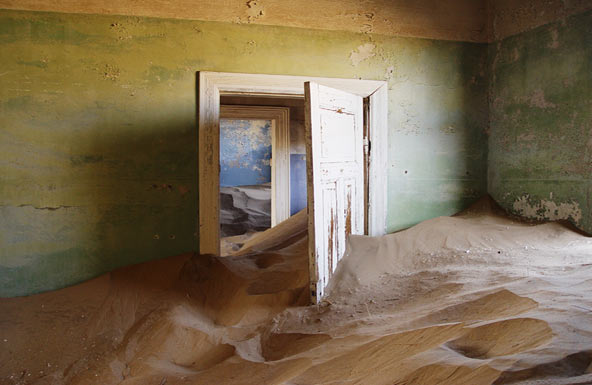
9. Craco, Italy
This picturesque medieval village has been the backdrop for a number of movies, including Quantum of Solace and The Passion of the Christ. Dating from the 6th century, Craco sits precariously at the top of a 400-foot cliff overlooking a river and has been deserted since 1963, when recurring seismic activity and landslides threatened to level the entire town, rendering this Italian village uninhabitable. The relics of Craco include a university, a castle, churches and several plazas.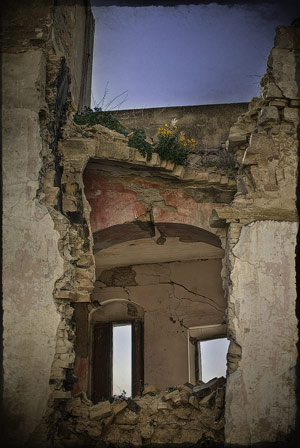
10. Prypiat, Chernobyl, Ukraine
The meltdown of the Chernobyl nuclear plant spewed large quantities of radioactive particles into the air. Winds carried the radioactive contamination across Europe and the 30,000 residents of Pripyat were evacuated several days later though the Soviet Union did not admit that an accident had occurred until a nuclear plant in Sweden, over 500 miles away, detected the chart-topping radiation levels.
The city of Pripyat was built in the 1970 to house the Chernobyl nuclear facility workers. Residents were only allowed to leave with one suitcase of belongings. Everything else was left behind. The city is still littered with furniture, books, clothing and other personal possessions, making it a museum of sorts.
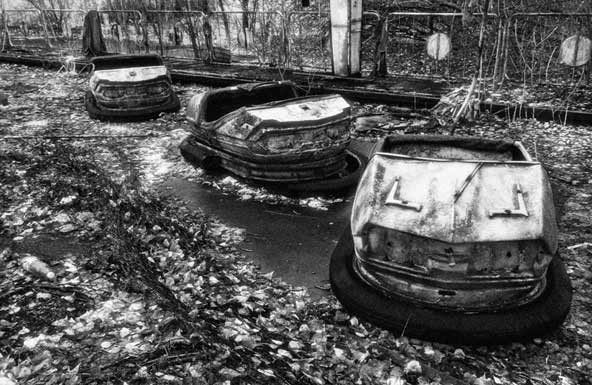

0 comments:
Post a Comment